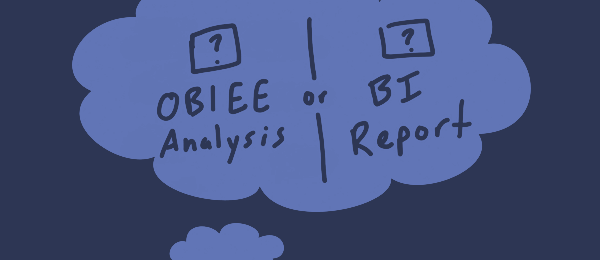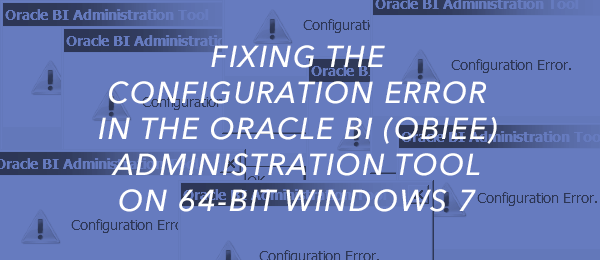As an extension of the last post about filters and selection steps, we will focus our attention on writing logical SQL statements to help write more flexible ways to limit our data writing case statements. If you want to write logical SQL for the where clause in the query we will have to use the filtering option over the selection steps because we’re able to convert filters into SQL which we can customize or we can add a SQL statement straight to the filter without converting it. [message_box title=”NOTE” color=”yellow”]Once you convert a filter to SQL you will not be … Read More
OBIEE 11g Dashboard Prompt Creation
The use of a dashboard prompt allows you to embed both the filters from the analysis and the analysis on the same page. Some of the main reasons to use a dashboard prompt are that it allows the user to customize his or her analysis output, allows more flexibility when wanting to change the parameters of a report, and can be reused with different analyses. An inline prompt does not allow these options and navigates the user to see the report within the analysis and not the dashboard. It is much more rigid than the dashboard prompt. Creating a dashboard … Read More
OBIEE 11g Selection Steps and Filters: Their Differences and How to Use the Two
Selection steps and filters in OBIEE 11g analyses overall serve a similar purpose by limiting the data for the user. Filters are applied before the query is aggregated meaning that it could affect calculations and measures because the query is affected. Whereas selections steps are applied after the query is aggregated meaning that the only thing that is affected is what the user will see, this will not affect calculations and measures. Filters can be applied to attribute and measure columns while selection steps can be applied to attribute and hierarchical columns. The selection steps work incrementally so you should … Read More
A Comparison of OBIEE Drill Downs vs. Hierarchical Columns in 11.1.1.x
Choosing between a hierarchical columns or using a drill down depends on the purpose of the analysis, they both have positive qualities to them. Hierarchical columns allow the user to expand the column to reveal more information on the report but it also gives the option to condense the column back without affecting the selection of the data for the column. If the drill down column is used, the user will not be able to revert back to the original grouping when the dashboard was first opened because it affects both the selection steps and filters. Hierarchical columns will appear … Read More
Custom “No Rows Returned” Warning Message for a Report in OBIEE 11.1.1.x
It is good practice to have uniformity between reports on a dashboard, then it may be a good idea have a particular format for your prompts i.e. having a constant border style and font for each of them. Each report on the dashboard will look similar and it would be easier for a new user to get accustomed to OBIEE and I feel is more aesthetically pleasing. If you design your report to require a user to select prompts before it returns any roles, you may want to consider creating a consistent “no rows returned” message for the users. This … Read More
When to Use an OBIEE Analysis or BI Publisher Report?
BI Publisher Reports and Analyses are backbone pieces to help meet a business’s BI needs. They are both very flexible for their respective purposes. Being able to combine these pieces on a dashboard in a clear concise manner will give the end users an effective report. [divider] [space height=”20″] [toggle_box] [toggle_item title=”Analysis”] Requires no previous knowledge of the table structure because of predefined subject areas. Gives end users the ability to write ad-hoc reports Can create an analysis from scratch or modify an existing one on a dashboard. Users can save or share their customizations and export to various formats Can be … Read More
Formatting a Field Globally in OBIEE 11g
Some fields will have a standard way of being formatted, such as a date DD-MMM-YYYY or a dollar amount being set $x,xxx.xx. Having to format the field each time that a user wants to use it becomes quite burdensome and gives a developer more room for error if they are formatting the field each time it is used. The saying “work smarter, not harder” comes to mind with this solution. For this example we will globally change the format of the field “revenue” to the format $x,xxx.xx. Let’s open an analysis and for the sake of seeing the format prior … Read More
Fixing the Configuration Error in the Oracle BI (OBIEE) Administration Tool on 64-bit Windows 7
After completing a client-only installation of the Oracle BI (OBIEE) tools on a 64-bit Windows 7 computer, people frequently report getting a “Configuration Error” dialog box every time they launch the Administration Tool. This is what the dialog box looks like: Hitting OK just closes the tool. There are no log files. You appear to be stuck. Here is how you can resolve the problem: Go to the C:\Program Files\Oracle Business Intelligence Enterprise Edition Plus Client\oraclebi\orahome\bifoundation\server\binC:\Program Files\Oracle Business Intelligence Enterprise Edition Plus Client\oraclebi\orahome\bifoundation\server\bin directory. Look for the bi_init.bat file. This is the file that is executed when you run the Administration Tool. Make a … Read More







